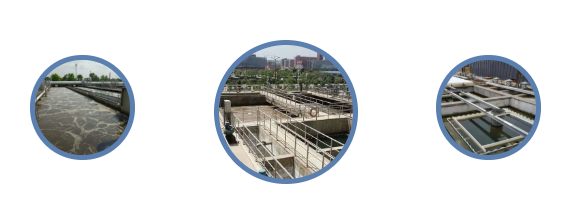

Phenomenon 1: The residence time of activated sludge in the secondary sedimentation tank is too long, and the aerobic microorganisms in the sludge continue to consume oxygen, resulting in the decrease of dissolved oxygen in the effluent of the secondary sedimentation tank.
Countermeasure 1: Increase the amount of returned sludge and shorten the residence time.
✄
Phenomenon 2: The working condition of the suction (scraping) mud machine is not good, which causes the partial sludge in the secondary sedimentation tank to be unable to return in time, some sludge stays in the secondary sedimentation tank for too long, and the aerobic microorganisms in the sludge continue to consume oxygen, resulting in secondary sedimentation. The dissolved oxygen in the effluent of the pool decreased.
Countermeasure 2: Repair the suction (scraper) mud machine in time to restore it to normal working condition.
✄
Phenomenon 3: The sudden increase of water temperature increases the oxygen consumption of the physiological activities of aerobic microorganisms and strengthens the activities of anaerobic microorganisms in the local anoxic area, which will lead to the decrease of dissolved oxygen in the effluent of the secondary sedimentation tank.
Countermeasure 3: Try to prolong the residence time of sewage in pretreatment facilities such as homogenization adjustment, make full use of the volume of the adjustment tank to circulate high-temperature water, or reduce the temperature by strengthening pre-aeration to promote water evaporation.
✄
Phenomenon 4: The organic load of the inlet water of the aeration tank is too low or the oxygenation amount of the aeration tank is too large. At this time, the dissolved oxygen in the effluent of the secondary sedimentation tank is too high but the water quality is good.
Countermeasure 4: The method of transferring more water from the adjustment tank to increase the influent load, or reducing the number of fans in operation and reducing the amount of oxygenation can be adopted.
✄
Phenomenon 5: The mixture of the aeration tank is poisoned, and the microorganisms cannot use the dissolved oxygen in the water, which may also cause the dissolved oxygen in the effluent of the secondary sedimentation tank to be too high.
Countermeasure 5: The phenomenon of excessive dissolved oxygen in the effluent of the secondary sedimentation tank formed in this way is temporary, followed by the rapid reduction of dissolved oxygen and the deterioration of the effluent quality. At this point, the source of the toxic substance should be identified and eliminated.
Name: Nicole Yu
Mobile:+86 17718148007
Tel:+86 17718148007
Whatsapp:8617718148007
Email:sales@kashionbiotech.com
Add:No.6, Zhanxi Road, Yaohai District, Hefei City, Anhui Province, China.